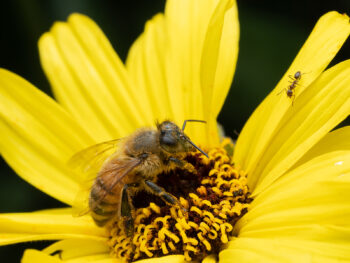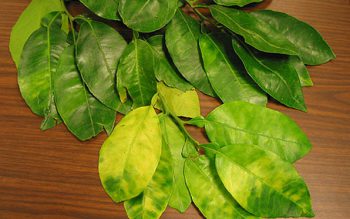Some are “crawlers” that search for a good feeding spot, then flatten themselves out, shed their legs and ooze out a protective shield to cover them as they steal.
Others are tiny parasitic worms with hollow, spear-like mouths they use to stab and suck life from the plant they’re hiding in.
Some are viruses: submicroscopic, protein-covered, disease-spreading agents.
Every year, County Agriculture, Weights and Measures (AWM) inspectors hunt them down and “intercept” them — to stop them and other invasive pests from potentially devastating San Diego County’s $1.7 billion agricultural industry, as well as the trees and shrubs in our local environment.
County Entomologist Tracy Ellis said AWM racked up more than 300 interceptions in 2013. That included more than 65 different individual species, from snails to scales, mealybugs, beetles, parasitic nematodes, mites, stinkbugs, viruses and bacteria.
“These pests can wreak havoc,” Ellis said. “And the County is working to stop them.”
Some of the pests the County intercepts can already be found here, but in very small numbers, and stopping new incursions keeps those pest populations from getting bigger.
“But the majority of these pests are invasive,” said Jose Arriaga, one of the County’s deputy agricultural commissioners with the Plant Health and Pest Prevention Program, “meaning they aren’t known to exist in our natural environment here.”
All of them — including the ones that could run amok here without natural predators and environmental checks to keep them in place — try to sneak or hitchhike their way into the County in shipments of plants, dirt, water, root stock, or even in that package Aunt Jenny sent in the mail.
Most of the pests, Ellis said, come from Florida and Hawaii. But they also come in from other states and countries, such as Singapore and Costa Rica.
Just reading the daily news explains how important these interceptions can be.
Parts of San Diego County are still under state quarantine because of the light brown apple moth, an Australian pest that can eat and wreak havoc on more than 2,000 types of plants and 250 types of crops, from apples to grapes, citrus, cabbage, corn, walnuts and ornamental plants including roses and chrysanthemums.
The goldspotted oak borer beetle, which Ellis said hitchhiked its way into San Diego County inside firewood imported from Arizona, has killed an estimated tens of thousands of oak trees here since it was discovered in 2002 and helped spawn a statewide “don’t move your firewood” campaign.
Another tiny beetle, the polyphagous shot hole borer, was discovered devastating Southern California trees in 2012. It’s believed to have come from Asia, can also be spread by moving infested firewood and attacks hundreds of types of trees including avocados, sycamores and oaks.
And San Diego County citrus growers have been holding their breath for the last two years, hoping our region can avoid the spread of “citrus greening,” an incurable bacterial disease discovered in Los Angeles County in 2012. Also known as “huanglongbing” disease, citrus greening is spread by the Asian citrus psyllid and cost Florida 6,600 jobs and $3.6 billion in economic activity between 2005 and 2012, according to a University of Florida study.
RELATED: Wasp Drafted to Suck Life from Citrus Threat
Vineyard Vigilance Targets Winged Threat to Winemakers
AWM’s pest interception team includes different groups, programs and personnel — pest detection, nursery inspection, the High-Risk Pest Exclusion Program, agricultural inspectors, insect detection specialists (also known as “trappers”) and the County Detector Dog teams: Labrador retrievers Venus and Drake, and their handlers.
Together, they regularly inspect “points of entry”: plant nurseries, shipping companies, the U.S. Postal Service, some retail businesses and occasionally Lindbergh Field. They also team up with U.S. Customs and Border Protection to conduct operations at the border.
Arriaga said the County’s interception programs are made even more effective because the County has its own bug expert, County Entomologist Ellis, and its own plant pathology laboratory, which can detect plant diseases caused by microscopic worms, fungi, viruses and bacteria.
Ellis, meanwhile, said County residents can also play a big role, by remembering some simple rules. Don’t move or import firewood. And when traveling, never pack anything in luggage that could carry pests — whether it’s raw, untreated foodstuffs, animal products from another country, or even a twig, some flower bulbs or dirt.
For more information, go to AWM’s “Insects and Plant Diseases,” Web page.
Also watch this County News Center video, “The Asian Citrus Psyllid Threat.”






